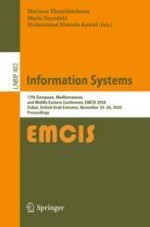2020 | OriginalPaper | Chapter
An Iterative Information System Design Process Towards Sustainability
Authors : Tobias Nyström, Moyen Mustaquim
Published in: Information Systems
Publisher: Springer International Publishing
Activate our intelligent search to find suitable subject content or patents.
Select sections of text to find matching patents with Artificial Intelligence. powered by
Select sections of text to find additional relevant content using AI-assisted search. powered by
